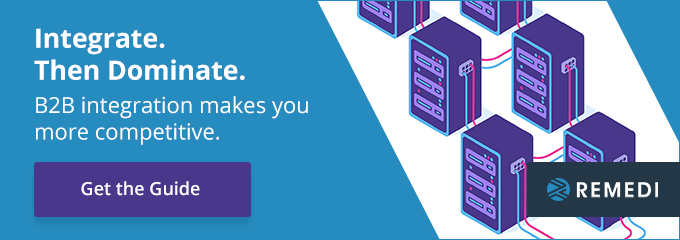
You understand that modern integration solutions are critical to business growth today. The companies that thrive now are the ones with a robust digital infrastructure in place. Yet, you need to convince your CEO and other members of the C-suite.
Read on to learn how to make the business case for a modern integration environment that enables you to grow and survive in a digital economy. See some of our recent data integration success stories.
What Is a Modern Integration Environment?
To make the business case for a modern business environment, let’s take a moment to explain what one is, so you can effectively and accurately talk about this to decision-makers.
A modern integration suite has five capabilities
- It can easily scale up and expand functionality
- It’s flexible enough to accommodate new integrations in the future
- It integrates legacy technology, so you don’t miss out on insights from crucial data
- It automates processes
- It integrates a wide variety of internal and external data for greater supply chain visibility
Legacy EDI solutions can’t do any of these things. EDI systems are designed to process large batches of information, and they do that well. However, to survive in today’s business climate, you need an integration environment that’s flexible, scalable, and future-proof.

The Challenges of Today’s Business Climate
There once was a time when you did business with local suppliers. A phone call or two could solve problems. That’s not the case today – your trading partners are most likely located across the world.
As such, you don’t have visibility into your supply chain. You find yourself reacting to events like a factory shutdown in China instead of proactively taking steps to mitigate the effect of supply chain disruptions.
Convincing the C-Suite That You Need a Modern Integration Environment
How do you convince the C-suite that you need a modern integration environment? You have to frame the argument in terms that decision-makers will understand easily and immediately.
For a start, legacy systems can be costly. In Cleo’s 2020 State of the Ecosystem and Application Integration Report, 30% of companies reported that tech hiccups, data errors, and SLA violations cost them between $100,000 and $1 million per year. Ten percent of businesses claim to have lost at least $1 million due to these issues.
“Thirty percent of companies reported problems with legacy technology cost them at least $100,000 per year.”
Here’s another statistic to bring to your C-suite: with legacy EDI systems, it can take at least a month to onboard new trading partners. That means that you’re waiting for customers to be able to order from you. You’re losing revenue because of your onboarding processes.
In addition, your customers want to buy your products online. Every year the online B2B market for buying and selling grows larger – between 2018 and 2019, it grew from $8.1 trillion to $9 trillion. Legacy systems won’t support online B2B marketplaces, although modern integration solutions do.
“In 2019, the online B2B for buying and selling grew to $9 trillion.”
If companies can’t adapt to the demands of the digital economy, they’ll find long-term survival difficult. Integrate. Then Dominate.




